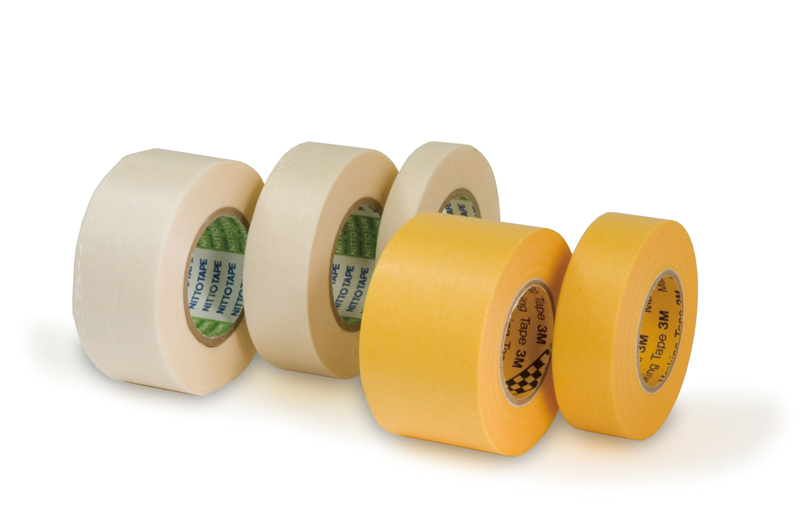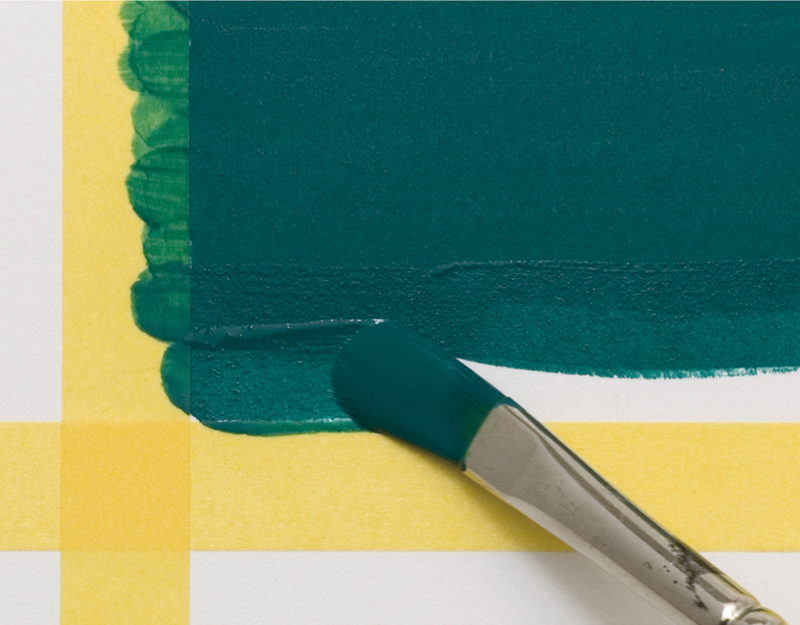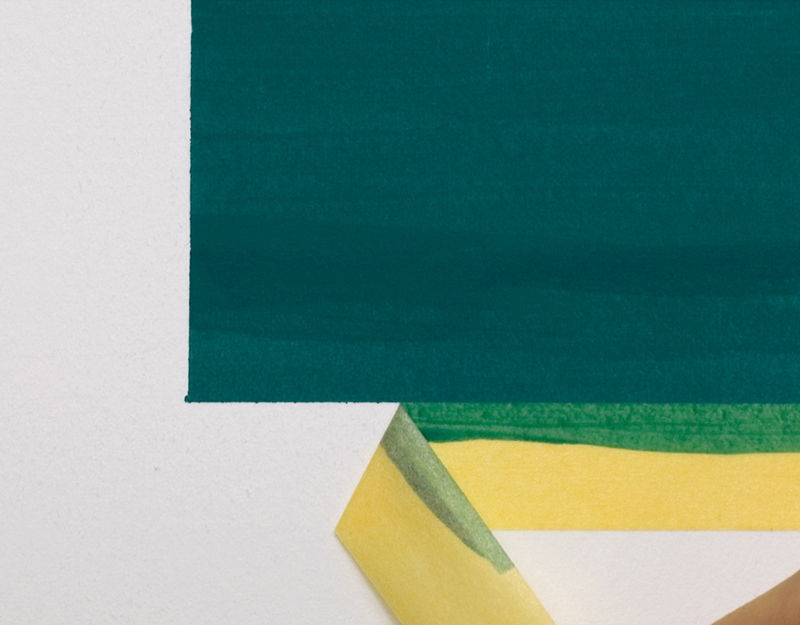Masking Tape
マスキングテープ
Masking Tape
CATEGORIES
Masking tape is mainly used in adding color to paintings as well as in painting and airbrush work to protect areas that are not to be painted and to produce different colors side by side. Most of the masking tape frequently used in art and design work is made of paper in widths ranging from 3mm to 30mm. As well as masking work, it can also be used in the same way as drafting tape to hold items during design and layout. When doing this, it is better to use a paper tape with weaker adhesion so that the paper is not damaged.
When applying the tape, it is pressed down firmly to prevent paint seeping underneath. (Check beforehand that the tape will not damage the paper when it is peeled off.) When painting, paint over the edges of the tape a little to ensure that there are no uncoated spots. When removing the tape after the paint has dried, it is important to be careful that the paint on the coated surface does not peel off with the tape. Store the tape in a dry place after use.
In addition to masking tape in rolls, there are also paper and film masking sheets. Masking sheets can be cut to the desired shape or size. It is possible to draw directly on paper masking sheets and film sheets are easier for cutting out accurately because they are transparent or semi-transparent. Masking sheets come with 1mm to 2mm wide slits and are convenient for detailed work.
Masking tape was originally developed to help in spray painting vehicle bodies because it was easy to apply and remove. It was pliable and made of crepe paper with a wrinkled surface. The types of masking tape available today vary in terms of material and characteristics. They have various specialized applications and features or industrial purposes on construction sites and in vehicle painting and for working closely in areas with corrugations. Masking tape and masking sheets can be purchased mainly in art supply stores and home centers.
RELATED PAGES
 Masking tape
Masking tape Masking sheet
Masking sheet- Using masking tape
 Step 1 : Paint over the edges of the tape to ensure that there are no uncoated spots.
Step 1 : Paint over the edges of the tape to ensure that there are no uncoated spots.  Step 2 : Remove the tape carefully to prevent any damage to the painted area.
Step 2 : Remove the tape carefully to prevent any damage to the painted area.
